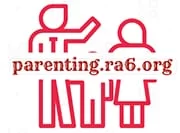Retroactive Child Support: Claims, Modifications, and Pursuing Payments Past Age 18
When it comes to supporting a child, both parents have a legal and moral obligation to contribute to their child’s well-being and expenses. However, circumstances sometimes arise where child support is not provided from the onset of a child’s life or from the point of a parental separation. This is where retroactive child support comes into play.
This article aims to demystify the concept of retroactive child support, explaining what it is, how to get it, and the nuances involved when it’s sought after a child turns 18, or when there’s a need for retroactive modification of child support.

Table of Contents
What is Retroactive Child Support?

Retroactive child support refers to payments that a non-custodial parent is ordered to pay for a period before the support order was established. In other words, it’s the child support that should have been paid during a time when it was not being paid or not being paid in full. This type of support is often awarded when the non-custodial parent has failed to provide financial support for their child from the beginning or since a separation or divorce occurred.
How to Get Retroactive Child Support

Obtaining retroactive child support can be a complex process, and it usually involves the following steps:
- Filing a Petition: The custodial parent must file a petition with the court requesting retroactive child support. This may be done as part of initial child support proceedings or as a separate action.
- Providing Evidence: The custodial parent must provide evidence to the court that the non-custodial parent was aware of their responsibility to support the child and failed to do so. This could include proof of income, attempts to seek support, and the child’s expenses.
- Court Considerations: The court will consider several factors when determining whether to award retroactive child support and the amount, such as the non-custodial parent’s ability to pay, the reasons for not paying sooner, and the needs of the child.
- Legal Representation: It’s often beneficial for the custodial parent to hire an attorney who specializes in family law to navigate the legal proceedings and argue the case effectively.
Retroactive Child Support After 18

One might wonder if it’s possible to seek retroactive child support after a child has reached the age of majority. The answer varies by jurisdiction, but in many cases, it is possible to pursue retroactive child support even after a child has turned 18. This situation commonly arises when the custodial parent was unaware of their right to child support or if the non-custodial parent deliberately avoided paying during the child’s minority.
The court will typically consider the same factors as with standard retroactive child support cases, but may also take into account the adult child’s current situation, such as continuing education needs or any existing disabilities.
Retroactive Modification of Child Support

There are instances where a parent may seek to modify a child support order retroactively. This can occur if there has been a significant change in circumstances, such as a loss of income, a new job, or a change in the child’s needs. To initiate a retroactive modification of child support, one must:
- File a motion with the court that issued the original child support order.
- Provide evidence of the change in circumstances that justifies the modification.
- Explain why the modification was not requested sooner if the change occurred in the past.
The court will evaluate the request and decide whether to adjust past child support payments. It’s important to note that some jurisdictions place limits on how far back a retroactive modification can go, often to the date when the motion for modification was filed.
Case Studies and Examples

Real-life examples can shed light on how retroactive child support works. For instance, consider a case where a non-custodial parent failed to disclose their true income during the initial child support proceedings. If later discovered, the custodial parent may file for retroactive child support based on the actual income.
In another scenario, a non-custodial parent might have been unemployed at the time of the original child support order but subsequently acquired a job with substantial earnings. The custodial parent could seek a retroactive modification to reflect the new financial situation.
Statistics and Trends

Statistics show that millions of dollars in child support go unpaid every year. The Office of Child Support Enforcement reports that in the fiscal year 2019, about $33 billion in child support was due, but only about 65% of that amount was reported as received. This underscores the potential need for retroactive child support in many cases.
Frequently Asked Questions

Can I ask for retroactive child support if the other parent has never paid?
Yes, you can request retroactive child support if the other parent was supposed to contribute to the child’s expenses but has never paid.
How far back can I request retroactive child support?
It depends on the laws of your state or country, but typically, you can request support going back a few years from the date you file for it.
What factors do courts consider when deciding on retroactive child support?
Courts often consider the non-custodial parent’s ability to pay, the child’s needs, any previous agreements between the parents, and whether the custodial parent requested support earlier.
Will the other parent have to pay retroactive child support in a lump sum?
Not necessarily. Courts may order the retroactive support to be paid in a lump sum or through a payment plan over time.
What if the other parent’s financial situation has changed since the time period for which I’m seeking retroactive support?
The court will consider the current financial situation of the parent when determining their ability to pay retroactive child support.
Can retroactive child support be waived by the custodial parent?
Yes, the custodial parent can choose to waive retroactive child support, but this decision should be carefully considered, especially in terms of the child’s needs.
How do I request retroactive child support?
You typically need to file a motion or petition with the court that handles family law cases in your area, and you may need to provide evidence of the other parent’s responsibility and your child’s needs.
What if the other parent is self-employed or hiding income to avoid paying more child support?
You may need to provide proof of the other parent’s true income. Courts can use various methods to determine actual income, such as examining tax returns, bank statements, or business records.
Can retroactive child support be adjusted if my child’s needs have increased since the original support order?
Yes, if you can demonstrate that your child’s needs have increased, you may be able to request an adjustment of the retroactive support amount.
What happens if the other parent refuses to pay the retroactive child support?
If the other parent refuses to pay, the court has enforcement tools at its disposal, such as garnishing wages, seizing property, or even imposing jail time for contempt of court.
Conclusion: Key Takeaways

Retroactive child support serves as a mechanism to ensure that children receive the financial support they deserve, even if it was not provided at the time it was needed. Here are the key takeaways from this article:
- Retroactive child support is meant to cover a period where proper child support was not provided.
- Obtaining retroactive child support involves legal proceedings and providing evidence of the non-custodial parent’s responsibility and failure to pay.
- It is possible to seek retroactive child support after a child turns 18 under certain circumstances.
- Retroactive modification of child support can be pursued when there’s a significant change in financial circumstances.
- Each case is unique, and legal counsel is often necessary to navigate the complexities involved in retroactive child support cases.
In conclusion, understanding retroactive child support is crucial for custodial parents who have not received the financial support needed to raise their child. It’s also important for non-custodial parents to be aware of their obligations and the potential for retroactive claims. With this knowledge, parents can better navigate the legal system to ensure that the best interests of their child are met.
Originally posted 2023-02-15 20:05:00.
